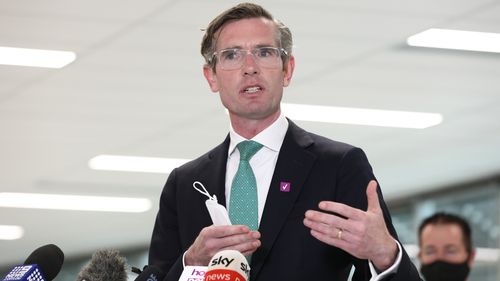Some regional Victorian students returned to the classroom full-time this week. Year 11 students outside of locked-down areas also returned to schools full-time on Wednesday.
But the experience of reopened schools in England shows Australia should take a cautious approach, Fiona Russell, a pediatrician and epidemiologist with the Murdoch Children’s Research Institute in Melbourne, said.
What happened in English schools?
From that latter figure, 102,000 students had a confirmed case of coronavirus and 84,000 recorded a suspected case. The remaining 18,000 children were absent for other reasons, including restrictions or being in isolation.
Public health experts have pointed out that illness-based absenteeism happened anyway, regardless of COVID-19.
But transmission was hastened in English schools when authorities removed mitigation measures such as masks and physical distancing.
What are the lessons for Australia?
Professor Russell says there will probably be a rise in COVID-19 cases among unvaccinated people when schools here reopen.
Masks will be mandatory for all school staff and older students in NSW and Victoria. They will also be recommended indoors for primary school children.
Professor Russell warns other Australian states and territories must have established plans to curb school transmissions.
“Multi-layered school mitigation measures including vaccinating teenagers is really important to prevent outbreaks and infections in school,” she said.

Professor Russell said rising vaccination levels among Australian teenagers was a major step. In comparison, the UK has only just started vaccinating 12 to 15-year-olds.
“Other states and territories should aim to get very high coverage of staff vaccinated, and all age groups vaccinated,” Professor Russell said.
The practice of “cohorting” rules – sorting students into fixed groups to cut the chance of COVID-19 transmission will also be important, she says.
The measure was successfully introduced into British schools at the start of term last month.
Safeguards for NSW students
Students in Kindergarten, Year 1 and Year 12 students will still return on October 18 as previously announced.
However, students in year 3, 4, 5, 7, 8, 9 and 10 will return a week earlier than expected, joining years 2, 6 and 11 on October 25.
NSW Education Minister Sarah Mitchell said COVID-19 safety measures were all in place for the earlier return to school.

Ventilation in classrooms has been examined, and vaccinations are mandatory for teachers.
Ms Mitchell said public schools would not be asking for information about a student’s vaccination status.
But the NSW Teachers Federation said they were “blindsided” about the removal of the staggered approach to get kids back to the classrooms, saying their plan is in “disarray”.
Some Victorian schools reopen
Melbourne students will begin a staggered return to classrooms on Tuesday.
VCE students have been back in the classroom to sit their General Achievement Test (GAT), but 33 students tested positive to COVID-19 earlier this week.
In total, 8000 students were tested before being allowed to go back.
Year 12 students are the first to return to classrooms. Then prep to grade 2 will start for a couple of days a week, and by November all students will finally be back in the classroom after another long stint of homeschooling.
Altogether students have missed more than 150 days of school.
The Victorian Government is spending $190 million on establishing air filters in schools.

